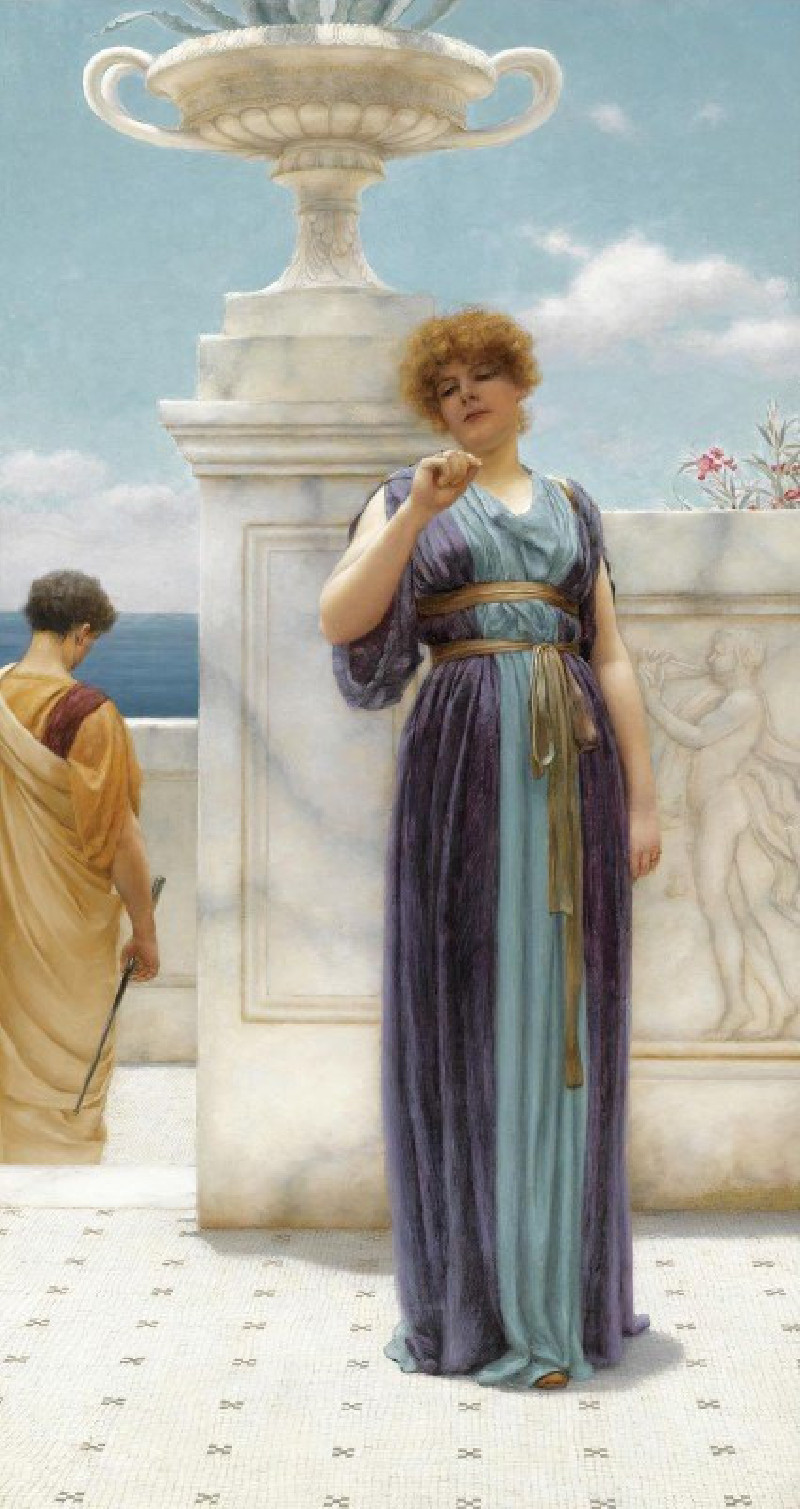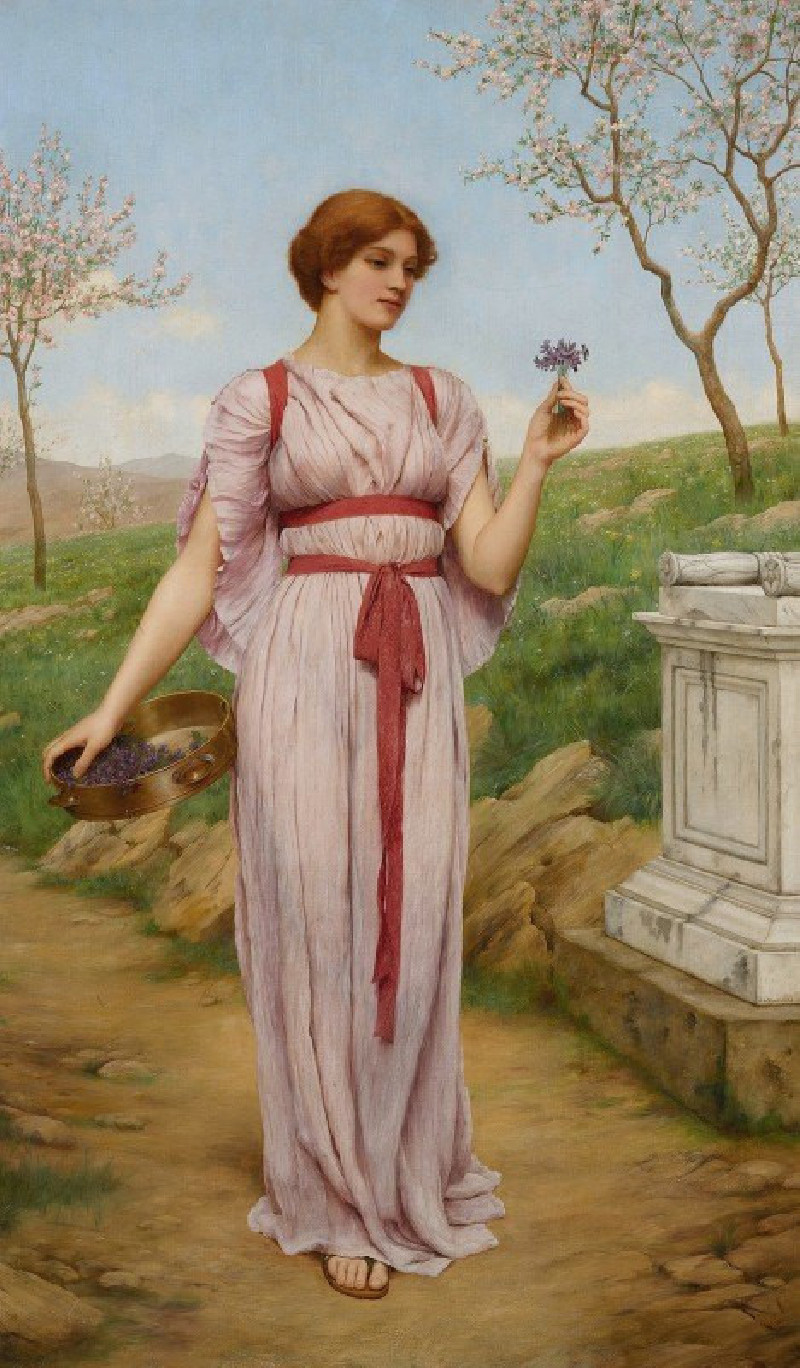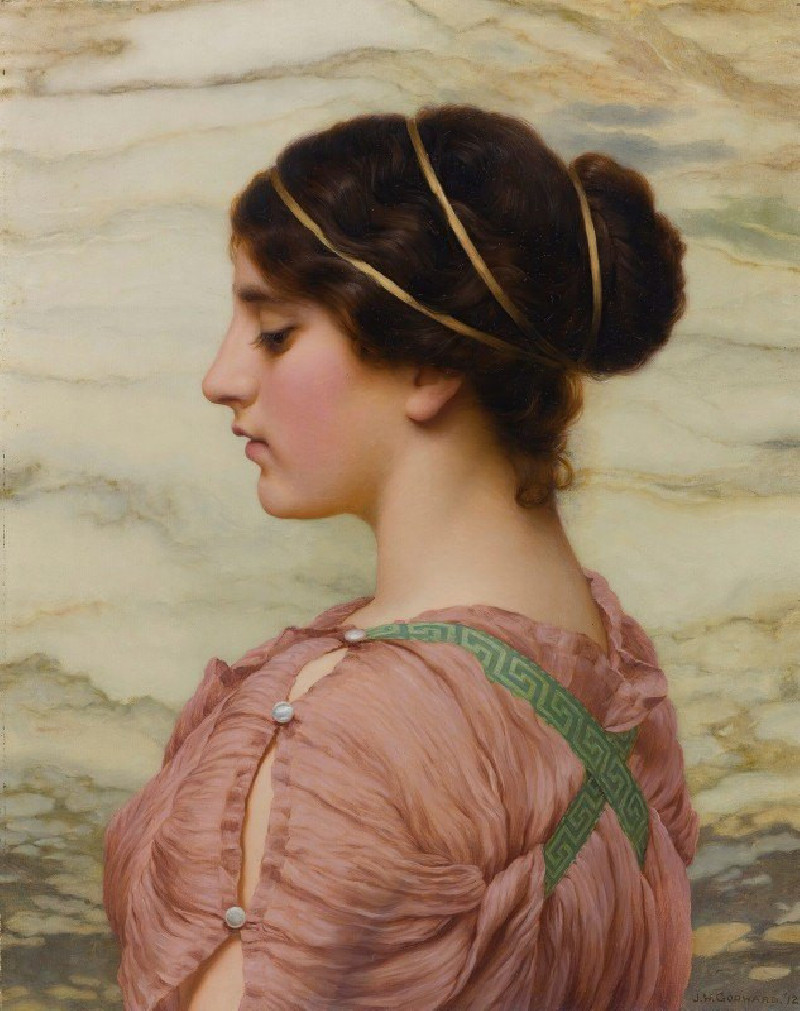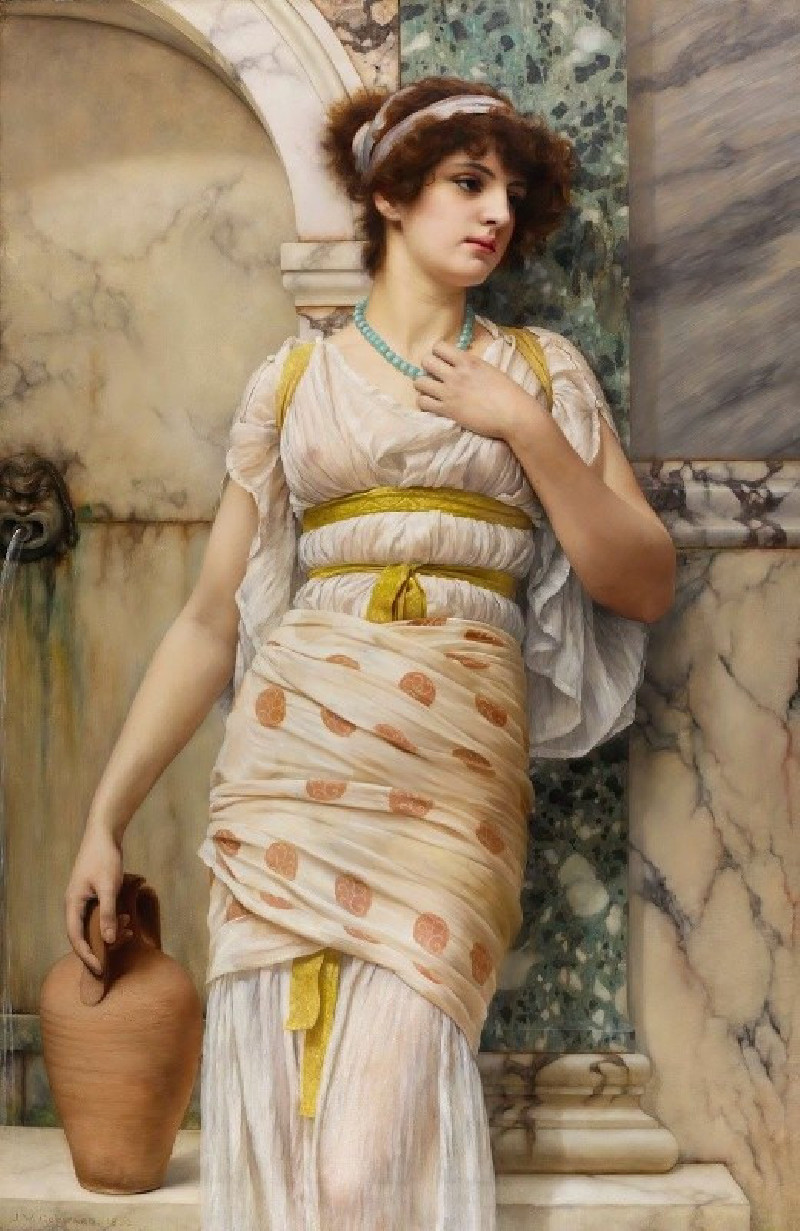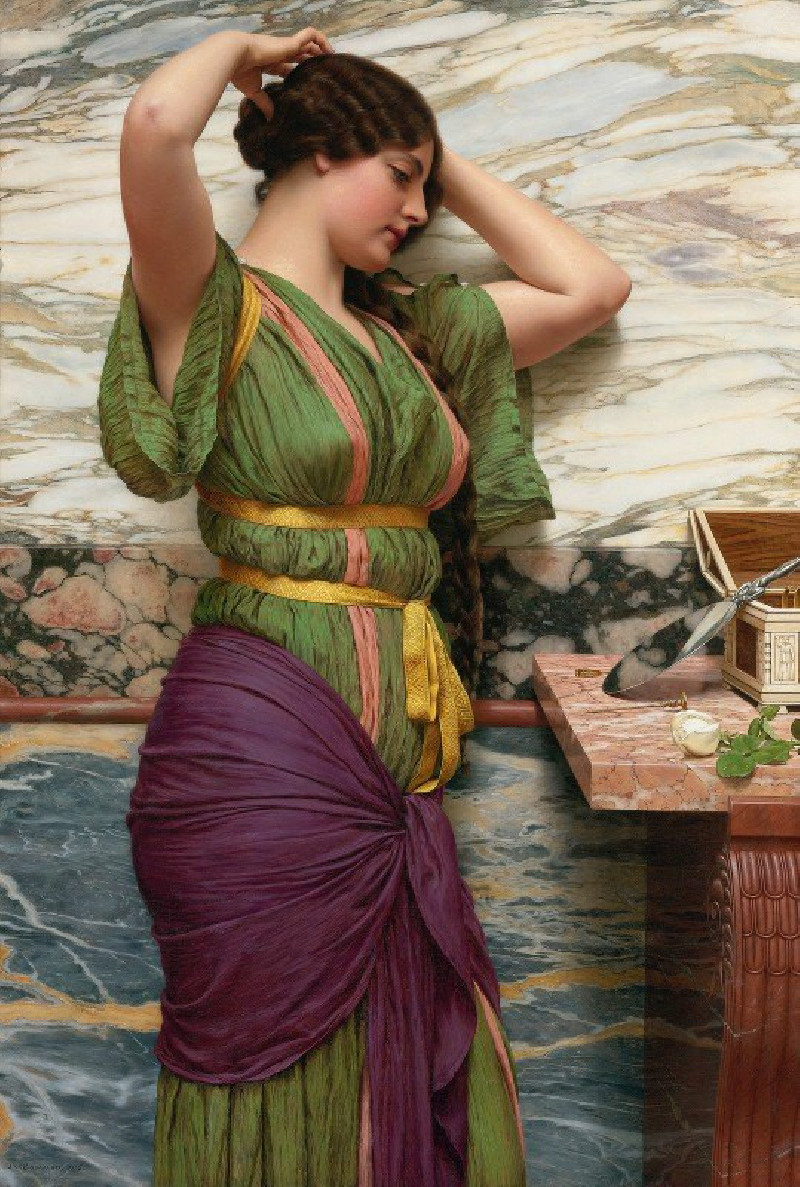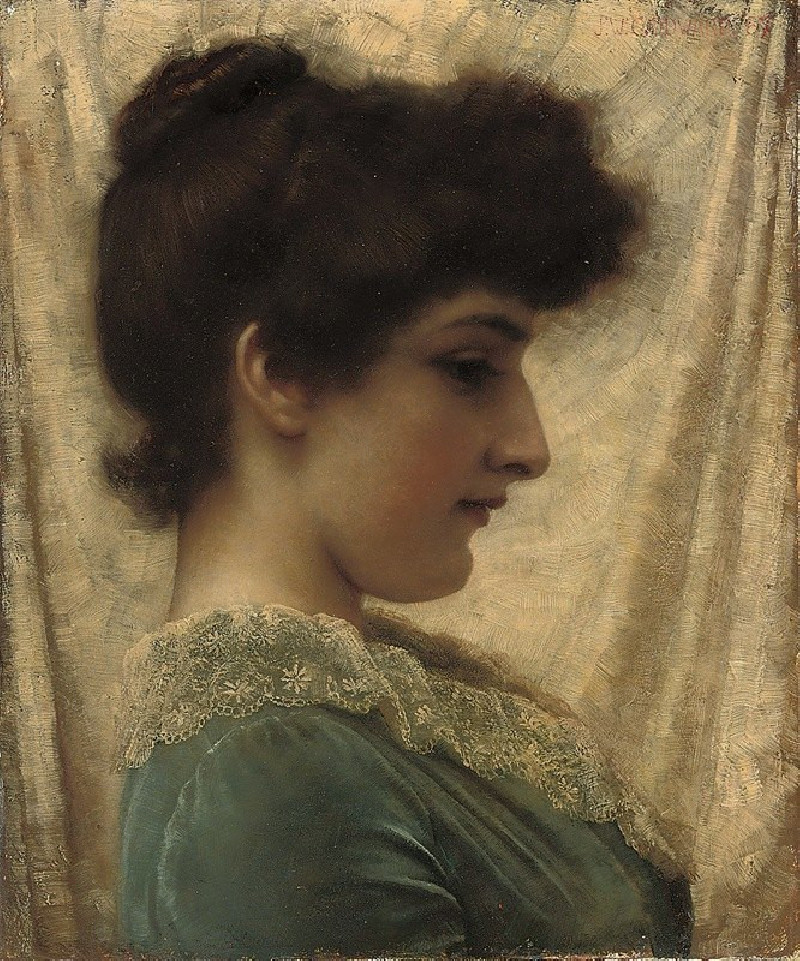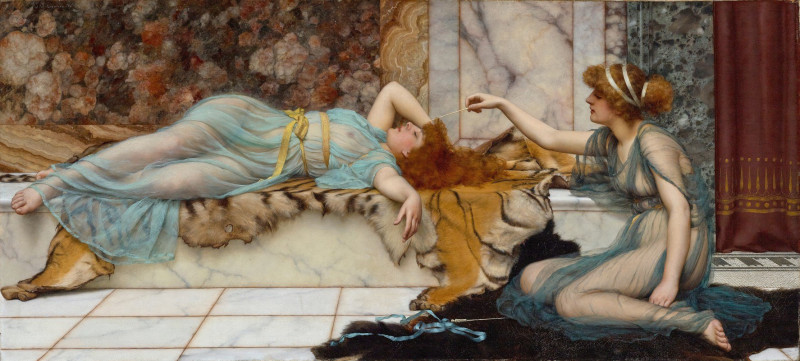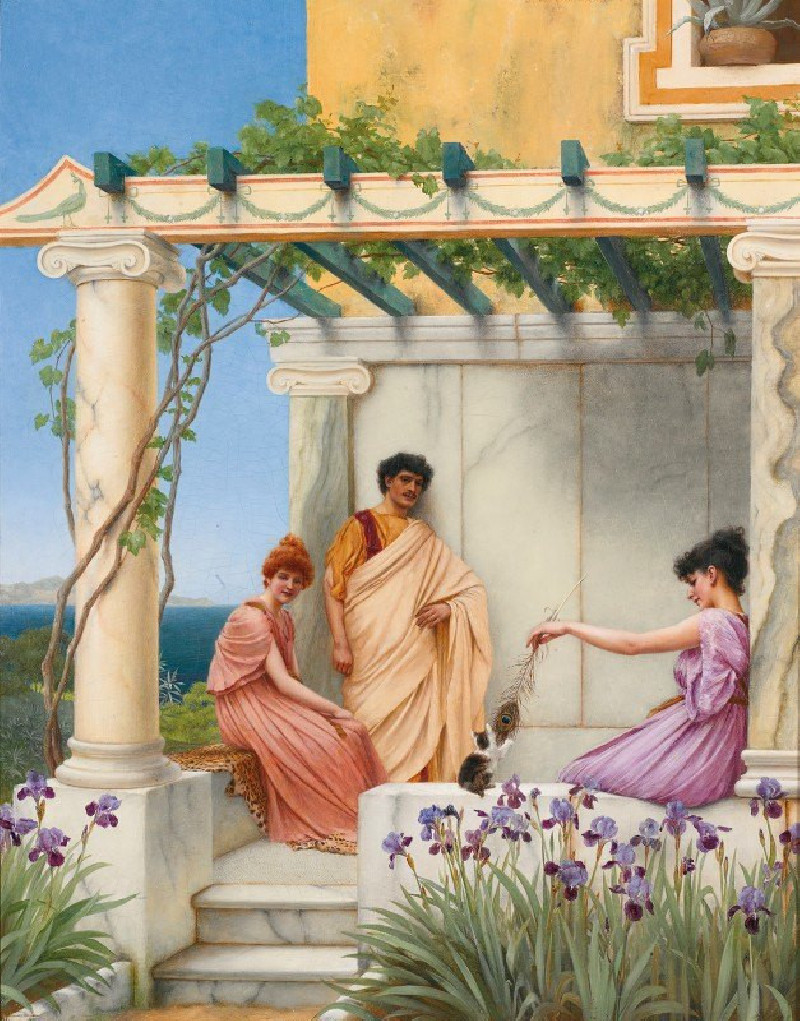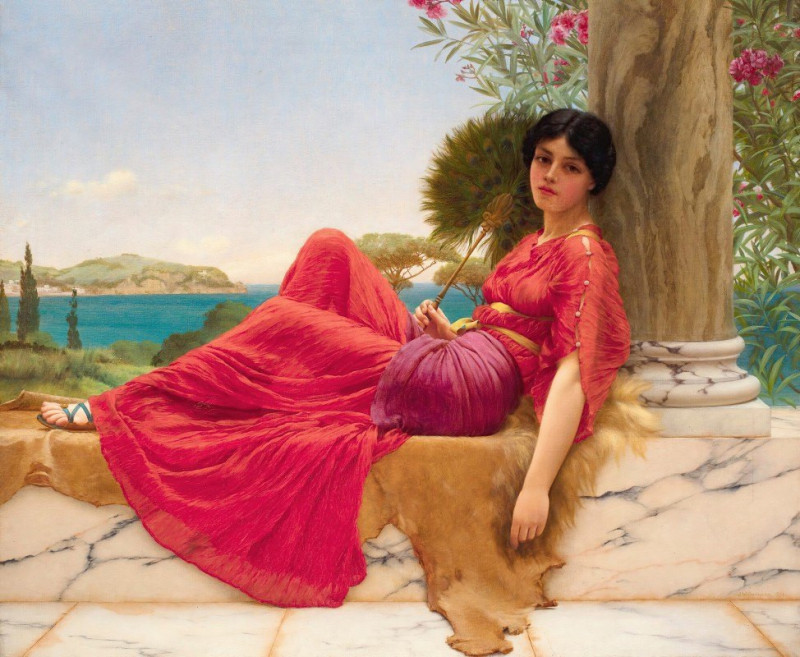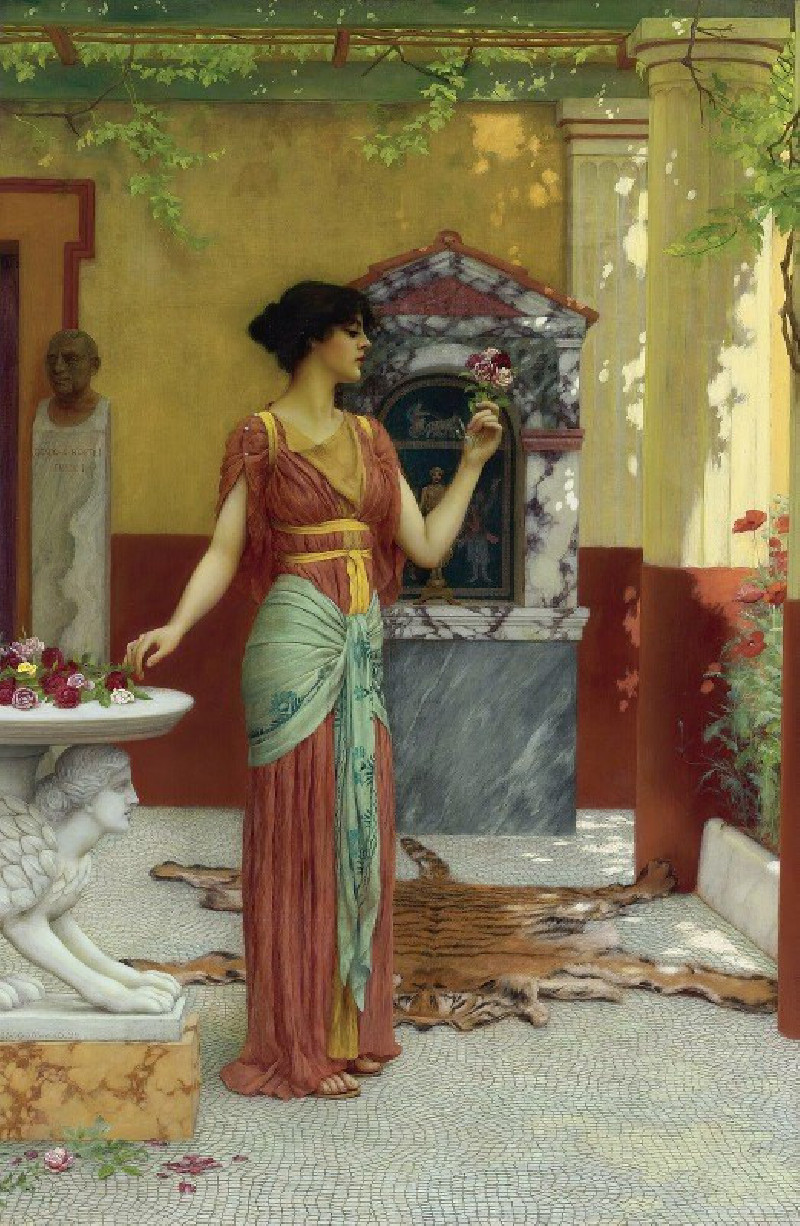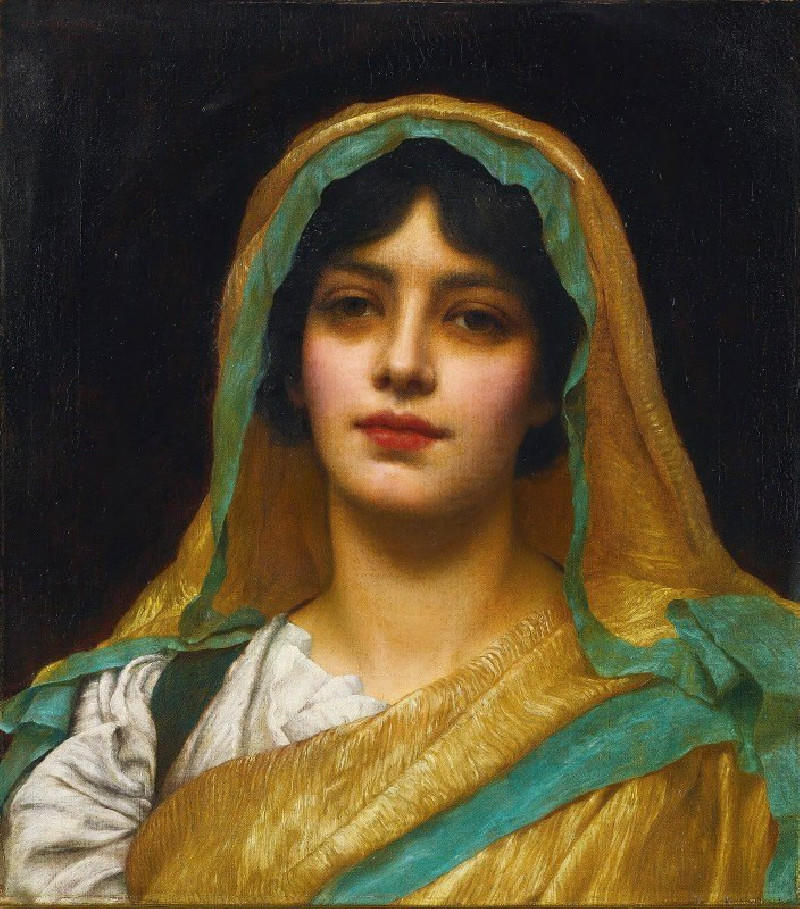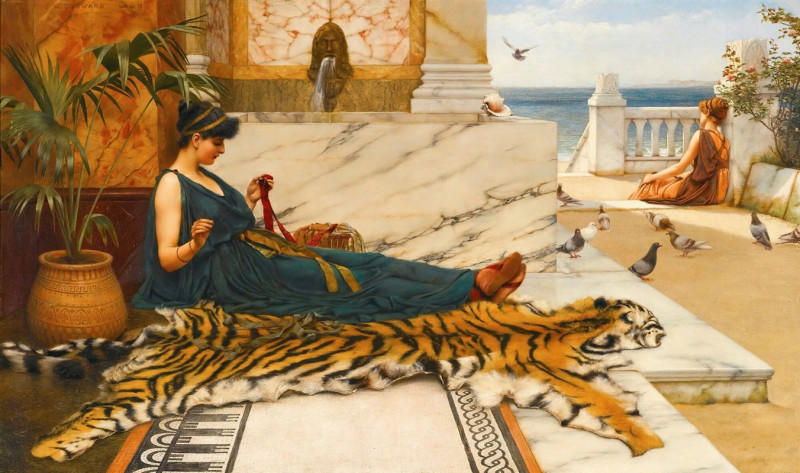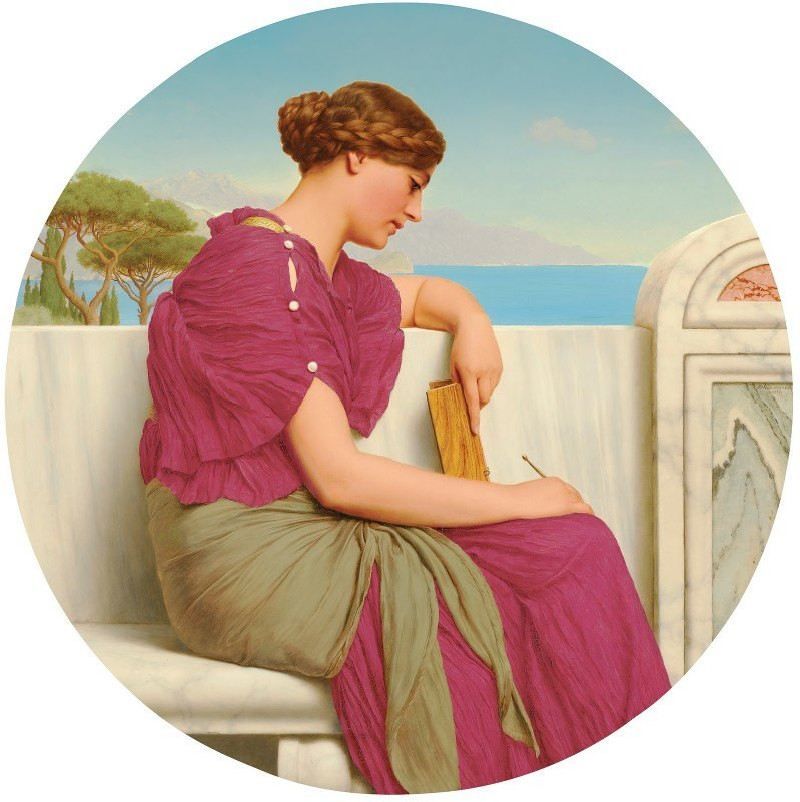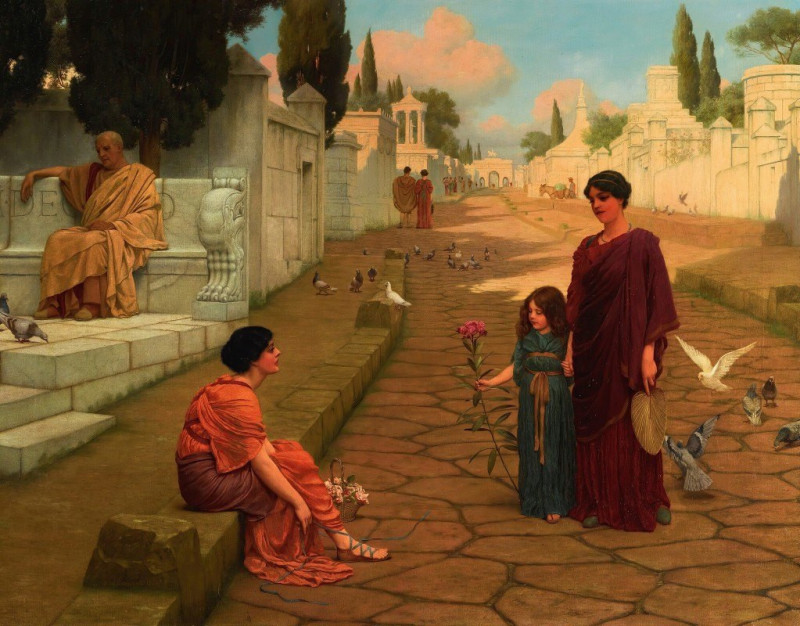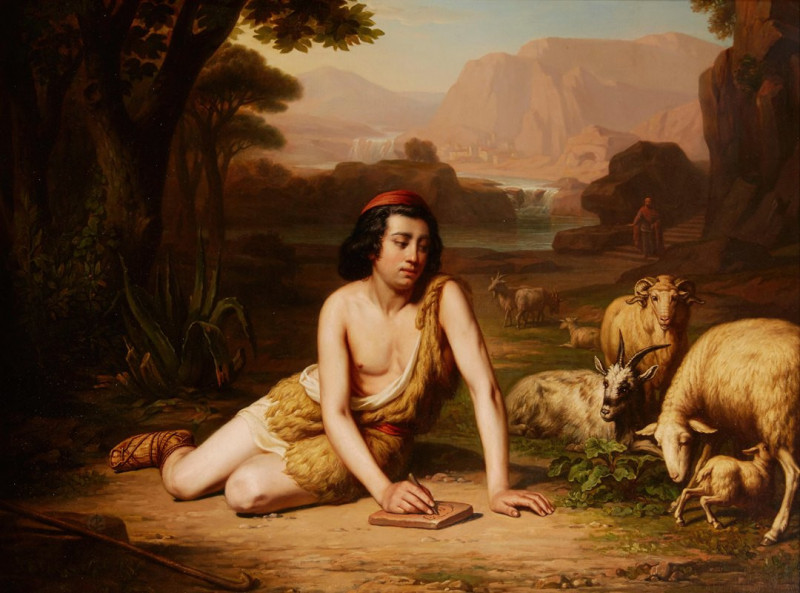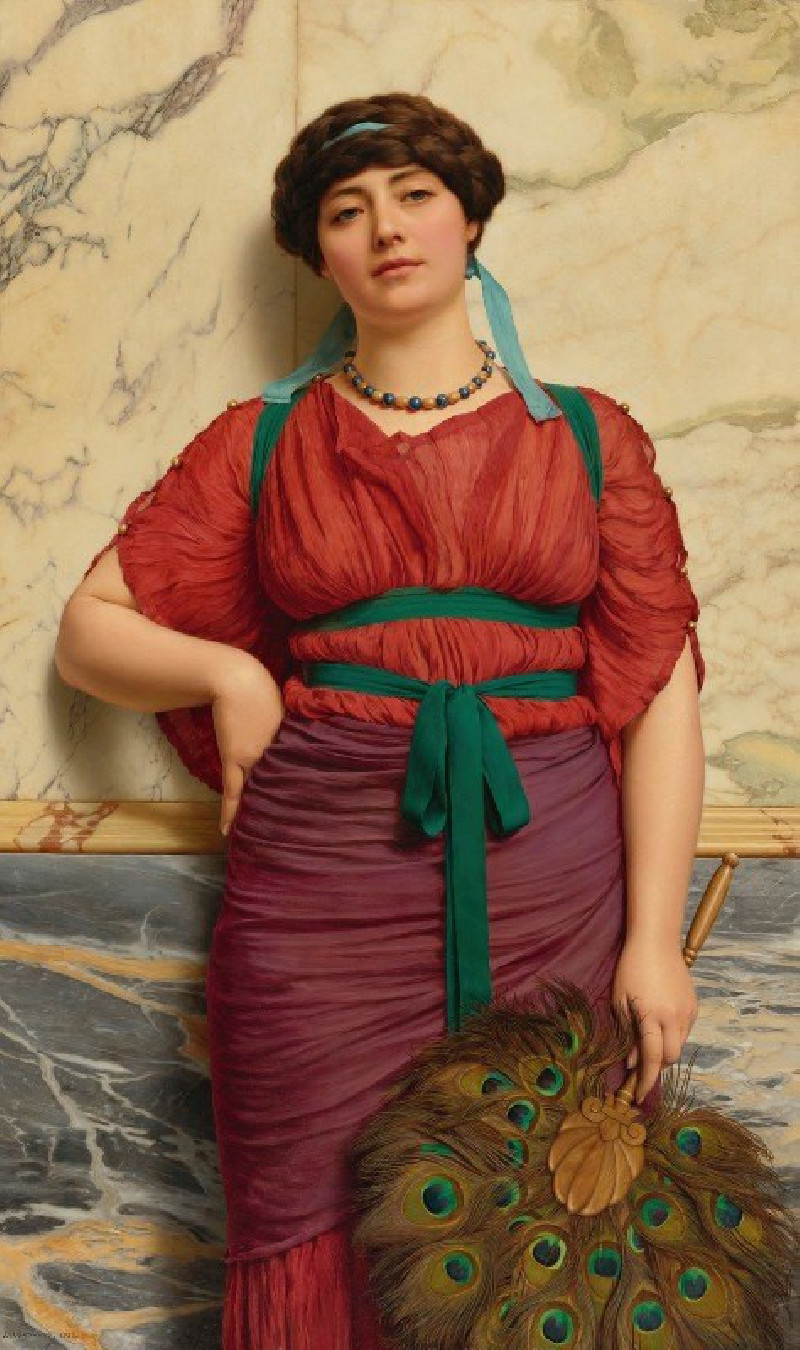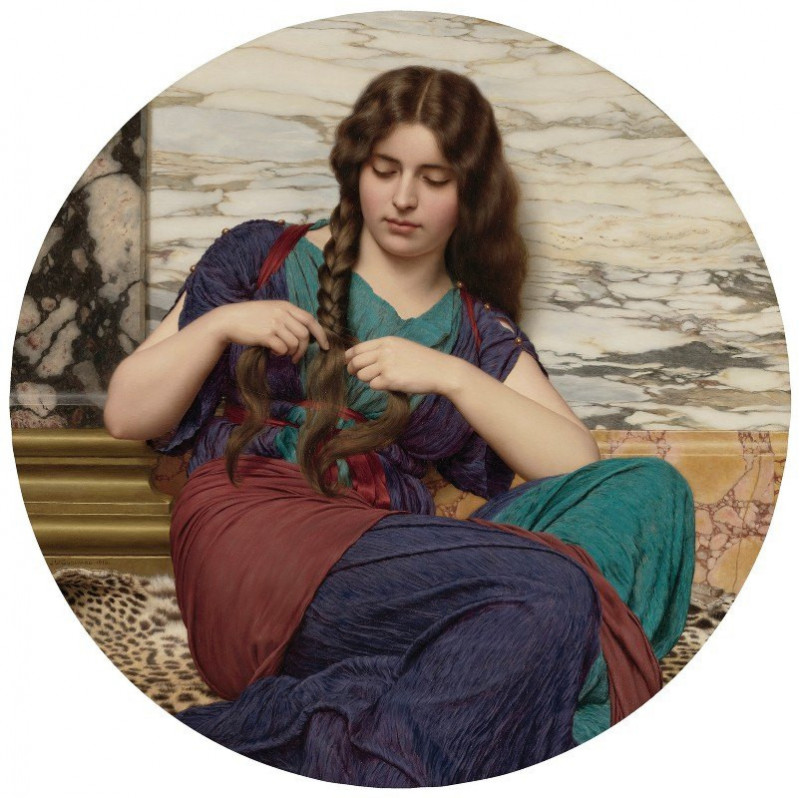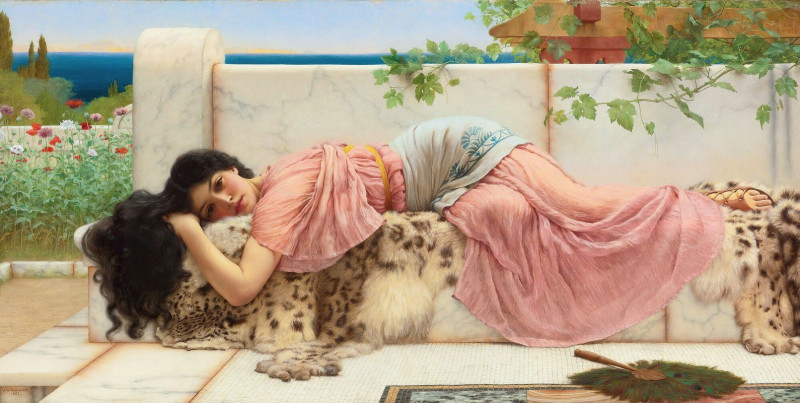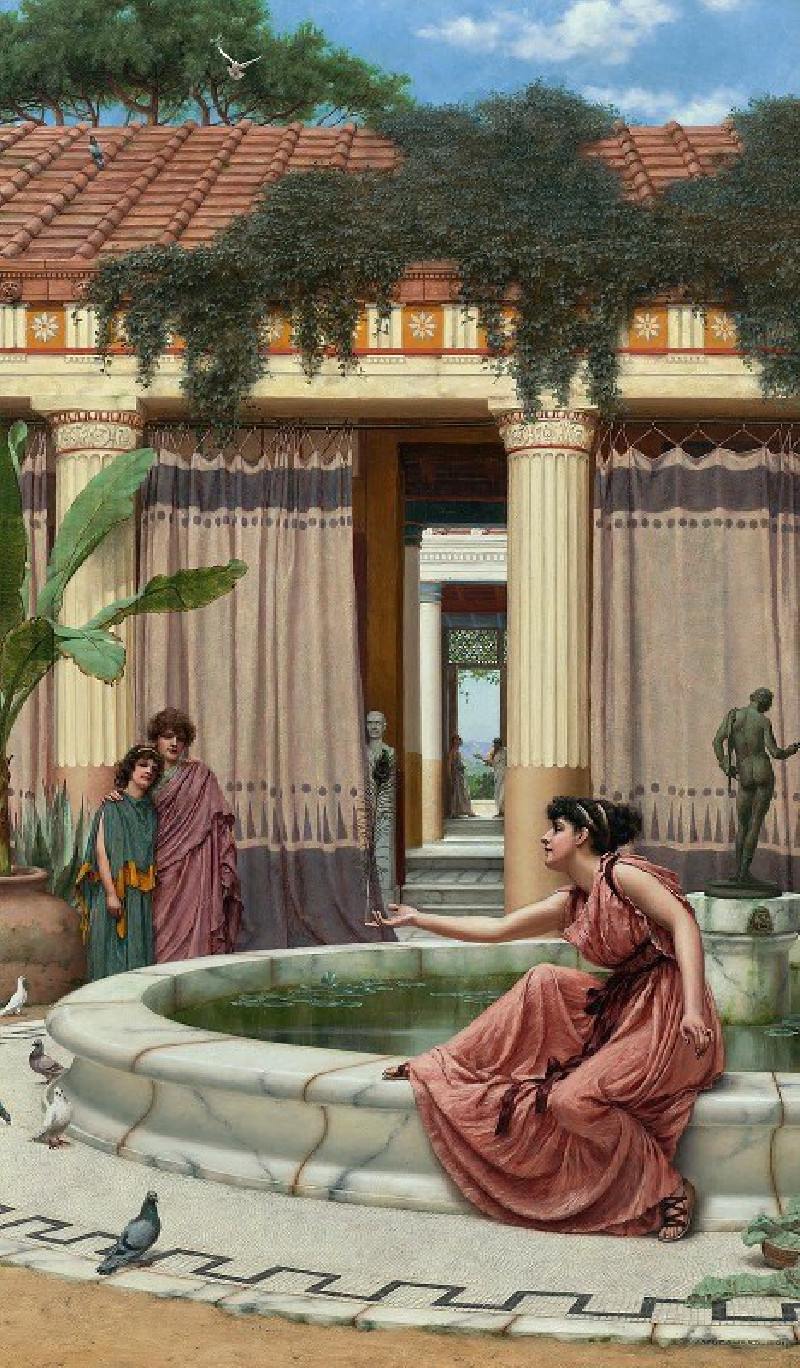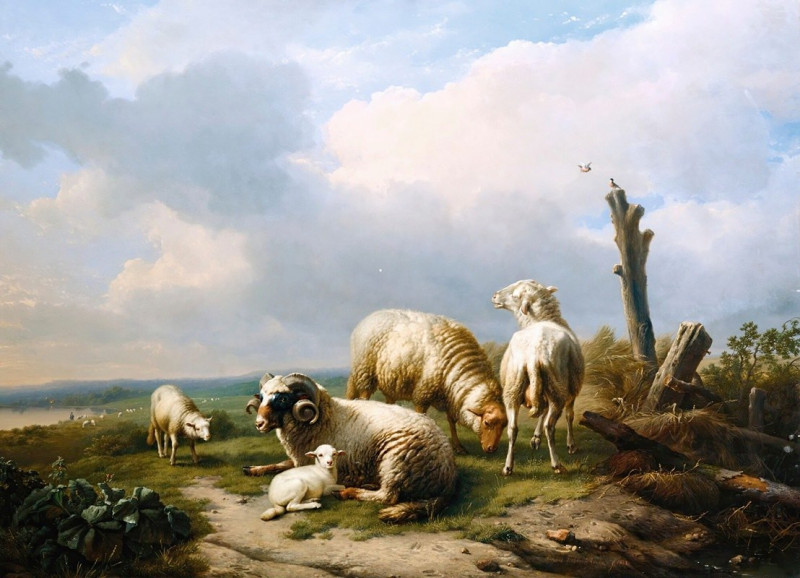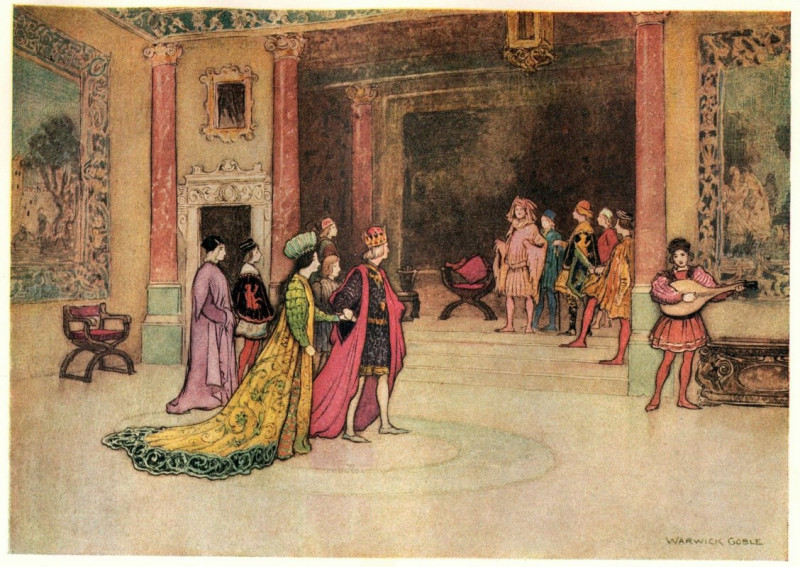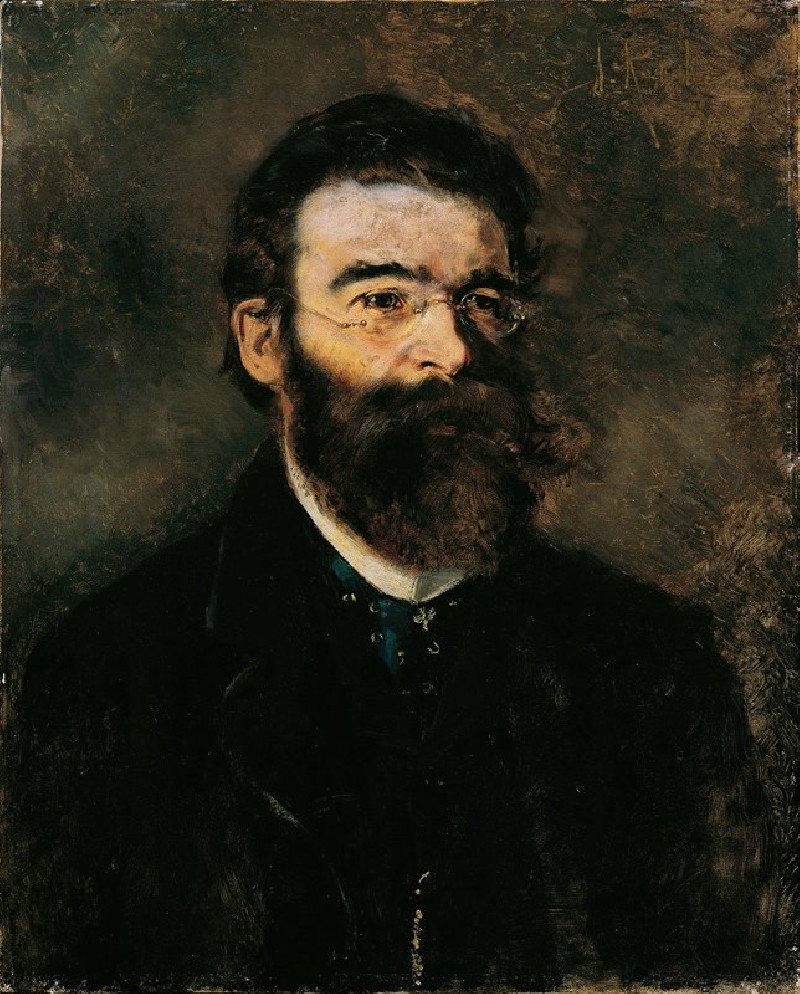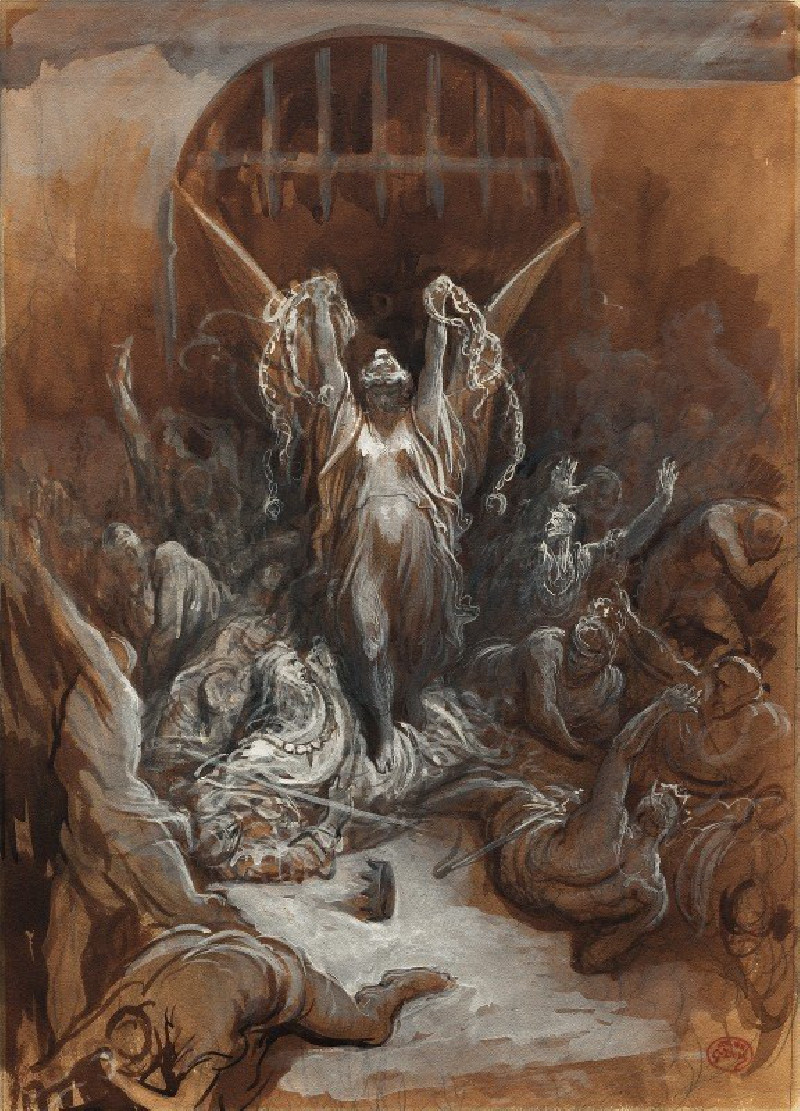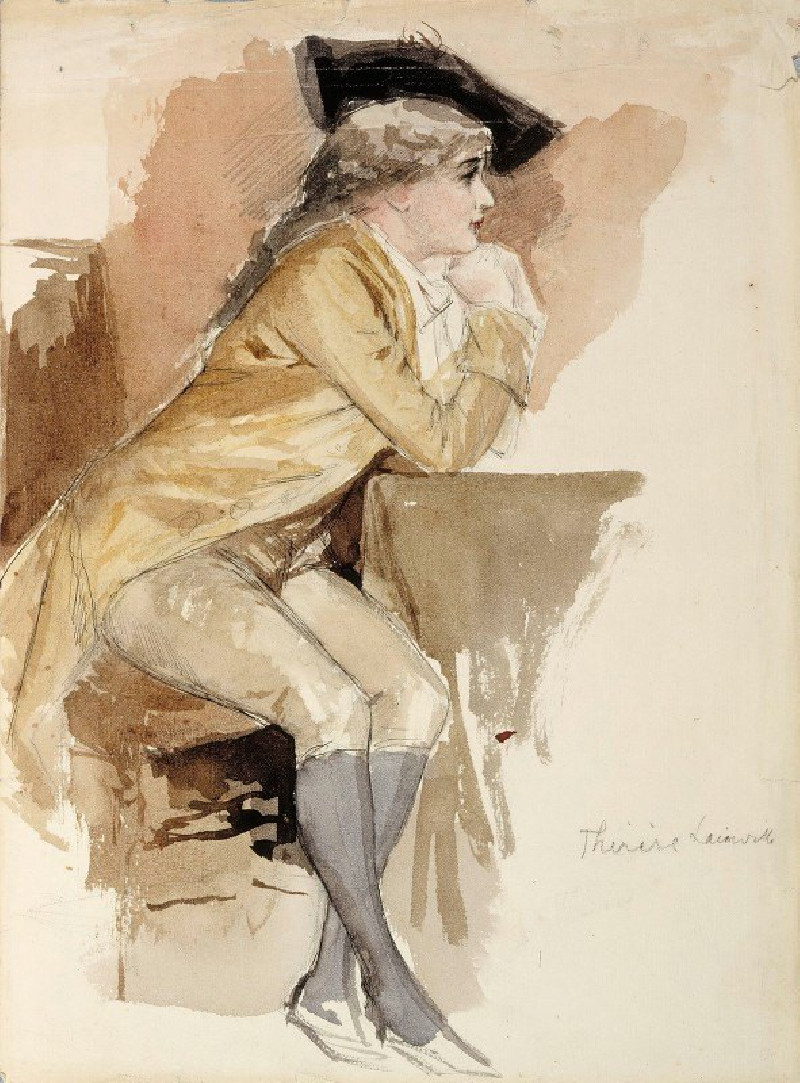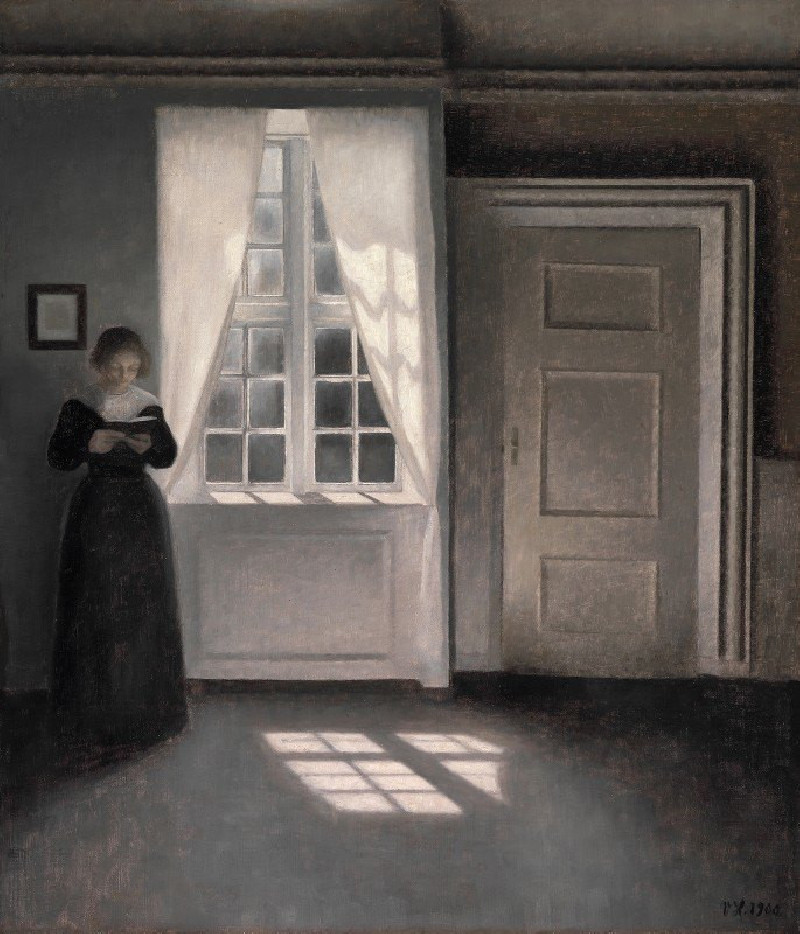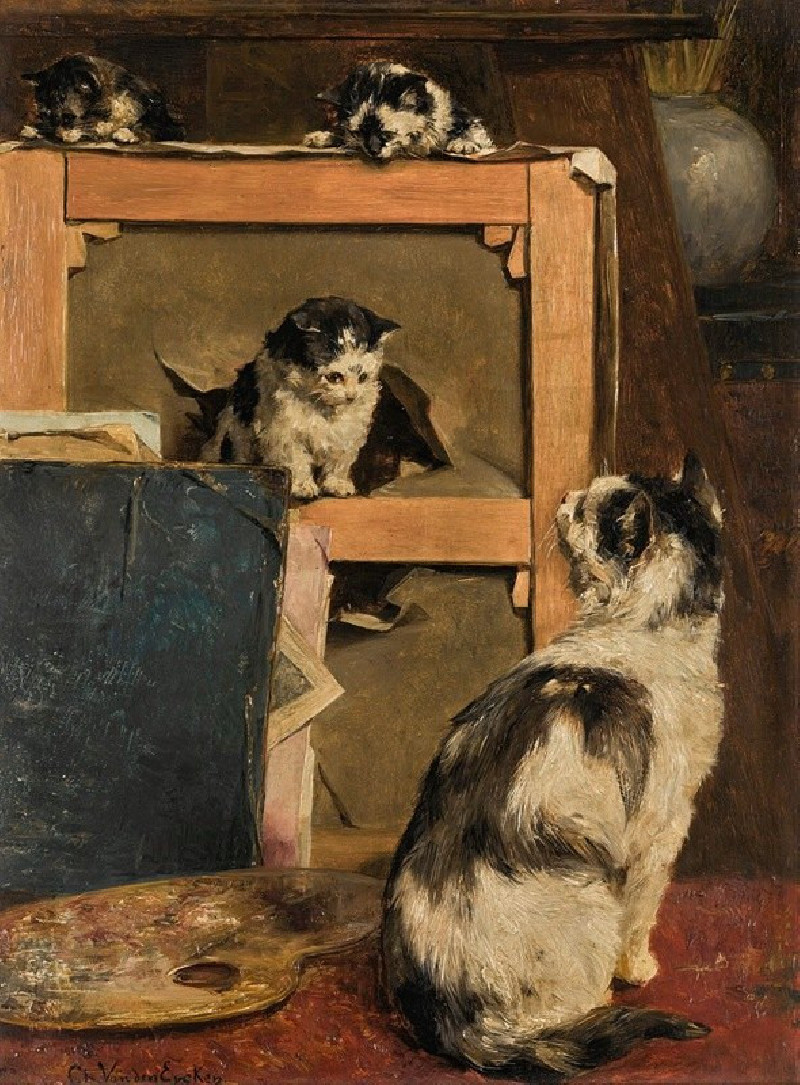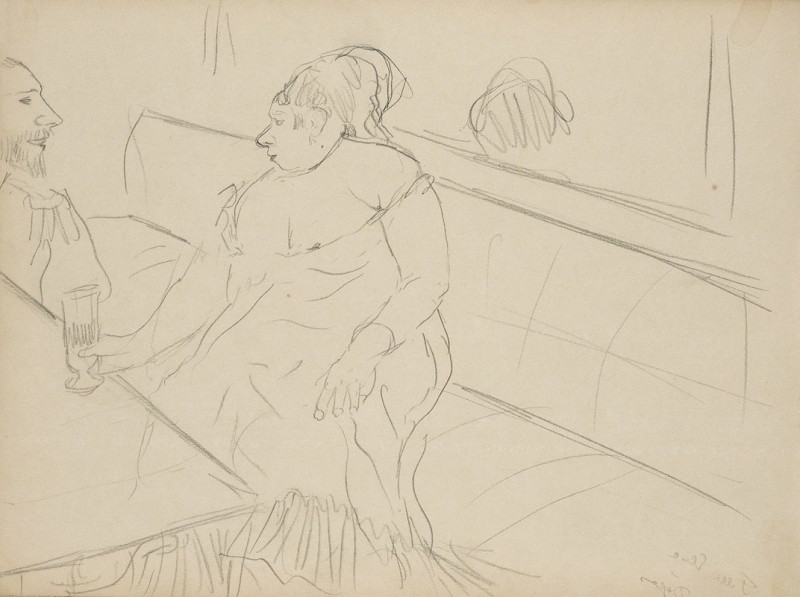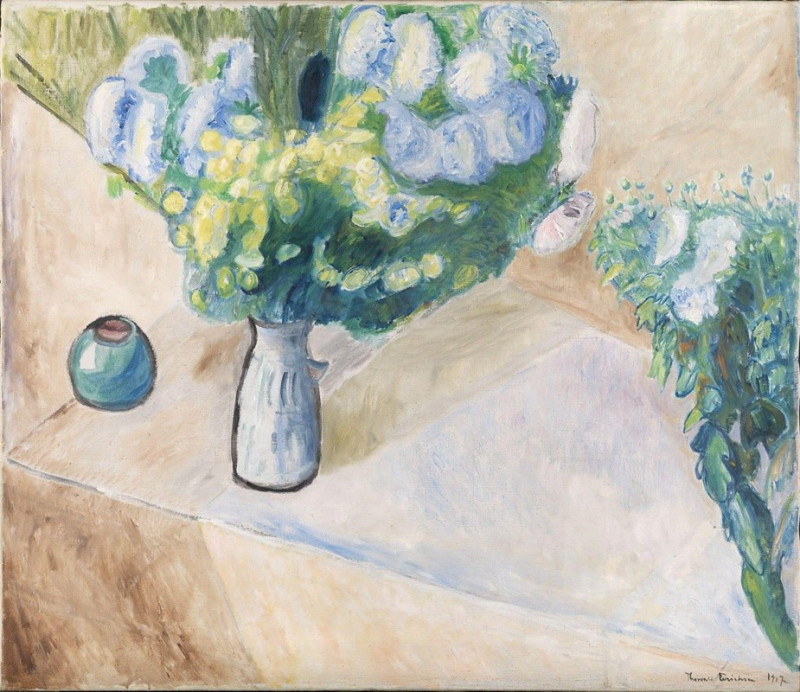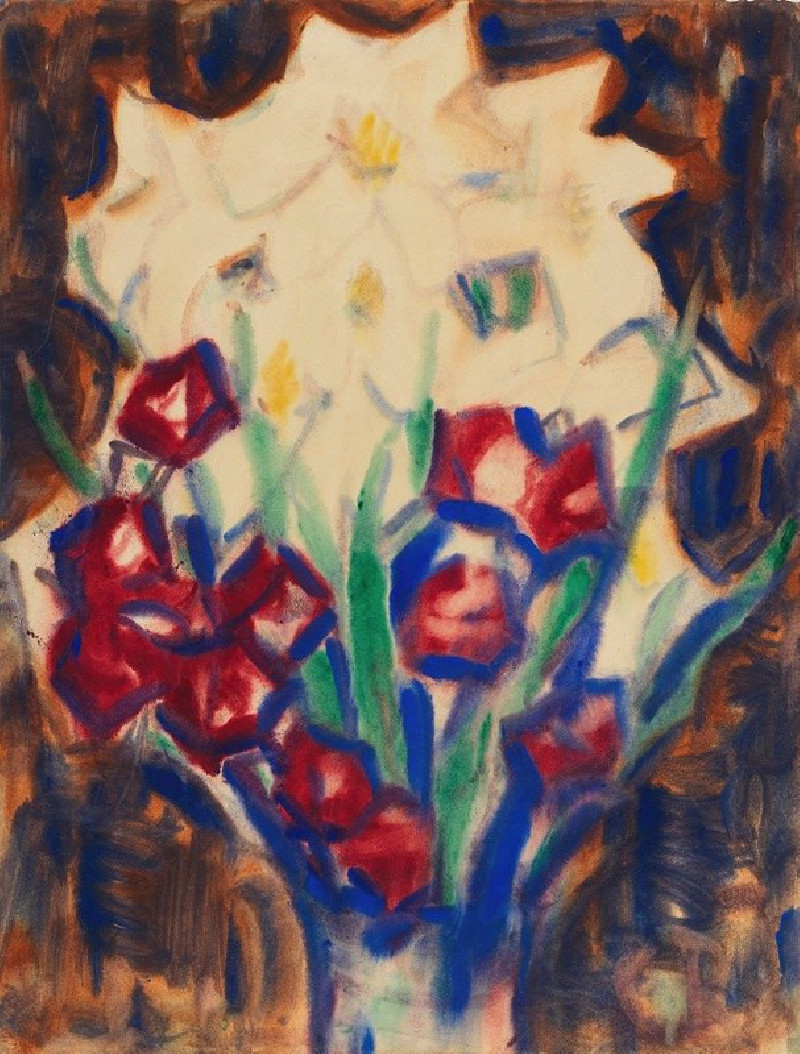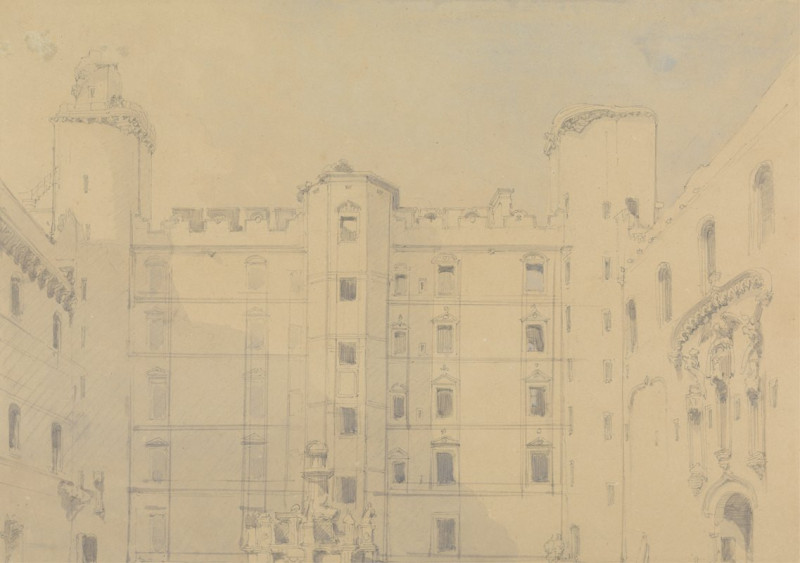Myrhinna (1915)
Technique: Giclée quality print
Recommended by our customers
More about this artwork
John William Godward's "Myrhinna" (1915) captures the ethereal beauty and serene grace of its subject, presenting a visually stunning portrait steeped in classical aesthetics. This artwork showcases Godward’s acute attention to detail and his adoration for the Neo-Classicism movement.In "Myrhinna," the viewer’s attention is immediately drawn to the young woman depicted in recline. Her gaze is soft yet contemplative, possibly reflecting the inner thoughts of a serene mind. Her luxurious curly golden hair frames her face beautifully, enhancing her gentle and relaxed expression.The textures in the painting are rendered with meticulous care by Godward. The woman's apparel, composed of rich pink and deep purple fabrics, provides a delightful contrast against her creamy skin tone. The delicate folds of her garments are crafted with a skill that lends a tactile quality to the scene.Set against a backdrop that seems to hint at an outdoor setting with hints of architectural elements, the painting balances human warmth with the coolness of stone, drawing a striking comparison between the ephemeral and the eternal. The softness of the model's features against the hard marble suggests a typical juxtaposition often found in Godward's work, emphasizing the timeless allure of classical themes."Myrhinna" stands as a testament to Godward’s ability to blend color, texture, and emotion into a harmonious scene that invites viewers to step back into a world where beauty and tranquility reign supreme.
Delivery
Returns
John William Godward was an English painter from the end of the Neo-Classicist era. He was a protégé of Sir Lawrence Alma-Tadema, but his style of painting fell out of favor with the rise of modern art.
Godward was born in 1861 and lived in Wilton Grove, Wimbledon. He was born to Sarah Eboral and John Godward (an investment clerk at the Law Life Assurance Society, London).




